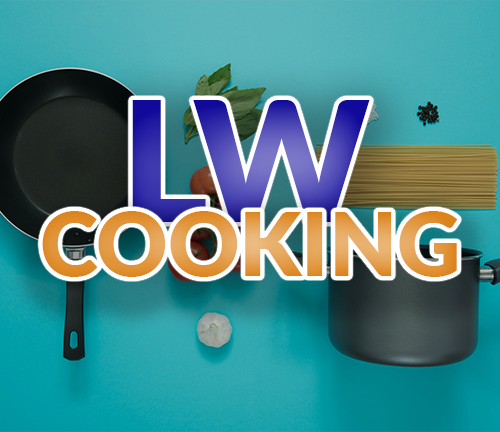Light usage of soy sauce inside. You won’t taste it, but it evenly salts the thing and adds umami flavor that really adds something amazing. Once you do it you’ll wonder why it took you this long
- 1 Post
- 45 Comments

 10·2 months ago
10·2 months agoDrop it in the ranch bottle. There’s no way he’d look there and even if he did, it wouldn’t be easy to see. Similar ideas would be a shampoo bottle or taped inside a drawer slide so a metal detector wouldn’t work
oh goodness, Maynard should have been the composer for the Dune movies

 6·4 months ago
6·4 months agoJust don’t use a window envelope

 3·4 months ago
3·4 months agoI’ve had a Timbuk2 laptop bag for a long time, over a decade and no issues. Loved it so much I bought a backpack from them when my Swiss Gear straps broke. I’ve had it for probably 5 years, adore this thing and I can’t see needing to repair it anytime soon. Recently took it abroad stuffed with laptop and camera gear and it was great. Regular sales online, highly recommend

 5·4 months ago
5·4 months agoAnything by Andy Weir, he’s basically juvenile fiction with really good ideas and research
How do you carry a keyboard on a motorcycle? With a shoulder strap and turn it into a keytar. Immediately 200x more cool

 3·4 months ago
3·4 months agoThe Republicans got Smirnov Iced

 8·4 months ago
8·4 months agoThere’s anonymity and privacy. This keeps you private from other users, and they already keep you private from themselves other than the initial sign up. What this service isn’t, and never has been, is anonymous. They don’t want that and there are big usability issues with an extended anonymous user base. Decide for yourself what you need
Everything comes from somewhere else. Beans, corn, peppers, potatoes, squash, and tomatoes all came from the Americas. So any culinary traditions using those ingredients only goes back at maximum early 1700s, but more like early 1800s. They pale in comparison to the many centuries of history they have on this side of the ocean. Native people have been nixtamalizing corn for longer than anyone has been speaking French.
The UK has distinct food culture, that’s not at issue. But you can trace it to the density of people and length of time inhabited. But if you look at specific regions of the US, you can see similar. Take a similar size area. Like the northeastern seaboard from Boston to north Carolina, that’s a HUGE amount of regional food differences. Beans, soups, seafood, sandwiches, barbecue, fried chicken, breakfasts, desserts, slaws and salads. And that’s not even mentioning the alcohol traditions. Scotch wouldn’t exist without used American white oak bourbon barrels.
But yes, I am making the argument that both Mexican and Chinese food in the USA are separate and culinarily distinct things than what you find in their home countries. They’ve been in this country for well over 100 years; living, evolving, changing the attitudes and palates of Americans the whole time. You won’t find most US Chinese dishes anywhere in China, and you won’t find a dish that looks like US Mexican or TexMex in Mexico, even if it’s got the same name. But they will be regionally different. They’re influenced by each other, but they’re separate.
More than that, I’ll give you three foods that evolved from elsewhere but finalized in the US, and three honest foods that are 100% from the USA, showing off deep food culture. First for the evolved dishes that now are around the world. Hot dogs, hamburgers, and fries. They all had precursors, but the combination of German/Belgian food, French baking, and food science with industrialization to make for a cheap food that is tasty and easy to eat? Purely American. And now exported worldwide.
Next are the cultural dishes. First is chili. Every state has some version, some variety. With or without beans, different protein, brown or white, and different spices. But it’s a dish that comes from hard work, long hours, and wanting a filling meal that’s easy to make but well spiced. No bean soup quite hits the same highs, it’s almost more of a stew. Then you have biscuits and gravy. It originally came from the Revolutionary War, but today it’s best recognized as southern love on a plate, and and just as many calories. People from the UK often confuse US biscuits for scones, but they’re not. Scones have egg, and usually sugar in the dough, and get worked 2-3x as much as a biscuit, which is crispy on the outside but inside is airy, light, fluffy, and savory. Goes well with the rich, creamy, peppery sausage gravy. Last is barbecue. That’s got 5 legitimate culinary traditional regions and probably like 4 more that could argue for another. But it comes from poverty and slavery, when people couldn’t get good cuts of meat and had to invent methods to make them good. Then they combined that with Afrocaribbean flavors and local ingredients, and you have a unique tradition that is probably some of the best open heat cooked meat in the world.
After all this, I’m really not some sort of American chauvinist. Honestly I prefer pasta, ramen, and some African foods most of the time. But everywhere I see this lie that the USA has no food culture and it drives me wild. It’s a rich and diverse food culture, but just very different than the media says and very different than the rest of the world, and especially Europe. So it can sometimes be hard to understand. Hopefully this helps.
That’s the point, the US is geography about the same size as mainland Europe, and only about 80mill less people. Would you criticize Europe for not having a unified food culture across the entire continent? How about North Africa? No, that would be ridiculous. It’s the same for the US, you’ll find some similarities but even with the same food there will be differences and some places where you shouldn’t buy that food.
For instance, California has great Mexican food and especially street tacos. But you’ll find it hard to locate really good pizza. Florida is technically in the south, but there’s not a lot of good Mexican around, but fresh seafood is really nice. NY has some specialties but is probably the best place in the entire world for culinary diversity and quality. There are more immigrant populations there demanding quality food representation than anywhere else in the world. Even relatively sparse locations like small Midwest towns will typically have an okay pizza place, a good Chinese place, and a great Mexican restaurant. That’s way more than most countries can say.
US food culture is far more than what you see on TV
No, he Malaysian, as is the character. Just because he immigrated doesn’t mean you claim him. Do you work for the East India Company?
We must have been alone but we called it Egg-Toastie-O’s

 2·7 months ago
2·7 months agoTo be paired with “imnotgivingyouthepassword” to log in

 4·7 months ago
4·7 months agoI live at a place where I needed Starlink so I feel entitled to comment.
Ordered, and it took 6-7mo to allow me to start. In the meantime T-Mobile Home Internet let me start immediately. I kept both because when one had issues the other would be better (storms, updates, tower maintenance, downtime, Russian attacks, etc). But I noticed that Starlink kept getting worse. Lower speed, worse jitter/ping/bufferbloat/etc. it would routinely fail to hit 100mbps down with good sky view, mounted to a pergola. TMHI would routinely be above 250mbps, and I move to using it more often. Eventually a local ISP got a grant to roll out FttH in my area and I got rid of both.
It’s been a bit over a year since then, maybe things got better. But I noticed Starlink overselling their nodes, being non-communicative for support issues, and missing these easily attainable FCC goals to people that often have much less options than I did. There’s no reason for them to get absolutely wiped by a cell phone tower. Hope they made enough by packing on customers, because they just lost $900m

 5·7 months ago
5·7 months agoCheck out koreader to put another OS on there. Might be what you’re looking for

 3·7 months ago
3·7 months agoOLED over transflective, do you get all the bright colors but it can go transparent and use the sunlight readable and low power screen when that makes sense

 151·7 months ago
151·7 months agoBroadcast that we’ve discovered a cheap and hilariously effective FTL but to kick it off requires us to collapse the vacuum decay. We’re willing to do it and relocate to the other side of the universe, but we don’t want to destroy everything if anyone is around. Answer quick, we’re packing





Probably “memorial”